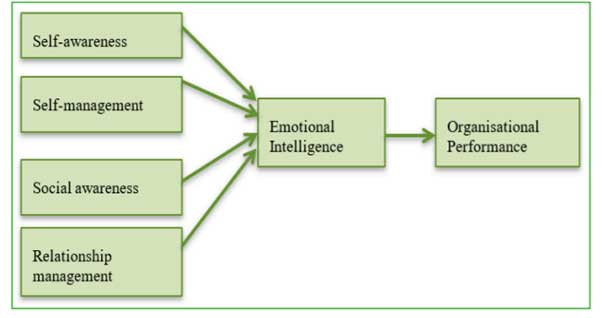Business Communication refers to the ability of a group or individuals to speak the same language to promote business internally and externally, which is an important aspect to complete in a competitive sphere of business and help understand the scenarios from a broader perspective.
The case study, which reflects the administration’s incapacity and inefficiency, let Mr. Dawood suffer who was the faithful employee of FM780 KR radio station. The loss due to communication cant be calculated in terms of business cost.
Poor Communication Trends
Poor communication tends to drive the business to a slow and painful death. [1]
- High stress and low morale
The leader is responsible for creating a clear guideline for the employees and transferring the information clearly; otherwise, the misunderstanding of the business goal will lead to high stress and create a negative sphere around.
- Increased turnover
Why would an employee stay in a place where they feel overworked or unappreciated? A lack of clear direction and open praise when good work does happen hurts the relationship with the employee.
- Decreased productivity
Commuting without clear direction lead you towards the wrong path, which ultimately results in waste of time and a decrease in productivity,
- Poor Customer Satisfaction
Lack of and miscommunication also lead to missed deadlines and incomplete services. Plus, employees become less invested in their work and less committed to providing quality customer service.
All these factors affect billion which are not accounted to balance sheets of each year, due to which no action has been taken and remains unsolved and few of them remain unidentified.
Conflicts in Organization:
Many factors prevent employees from direct and open communication, resulting in a high risk for conflict situations. If managers apply direct communication on time, the conflict could be avoided or minimal impact. Conflicts happen in everyday life and success conflict management is the key element of organizational and managerial success.
Organizational causes of conflict are the consequence of organizational design characteristics, limited resources in the organization and characteristics of organizational systems. Some aspects of the organizational cause are:
- Work interdependencies
Every individual can have its driving force to achieve and attain the goal when there are task interdependencies between individuals or groups; the higher the risk of confit to accomplish the goal.
- Sharing limited resource
Resources in an organization symbolize power and influence, so all organizational units want more resources for themselves. Resources are not just limited to finance, information technology, human resources etc. Insufficiency of these resources can lead to conflict.
- Awarding system
The awarding system in an organization directly impacts people’s behaviour, satisfaction, and feeling for justice and equality.
Conflict can start because of the inconsistent prize structure & people use to compare with each other in a group; One of the major dissatisfactions is employees’ salaries. It is challenging to measure an employee’s contributions towards an organization.
- Communication Problem
Barrier in communication can facilitate the conflict that might cause in an organization, leading to a negative impact.
- Managerial Expectations
Every employee in an organization is expected to meet the target/ short term goals imposed by his/ her supervisor within the time frame.
Model of Conflict Process:

Factors facilitating conflict in an organization can be from three stages. Conflict arrives when a group or individual feels frustrated with achieving the goal. This might be due to disagreement over performance goals and failure to get a promotion or pay raise. Whereas in the Conceptualization phase, conflict can be arrived at while understanding the nature of the problem, as we all have different mentalities so that other opinions can come across. In the behavior stage as a result of the conceptualization process, parties to a conflict attempt to implement their resolution mode by competing or accommodating in the hope of resolving problems.
This model is mentioned in every literature and represents the base of future models to manage the conflict, but the author assumes that all these stages do not need to appear always as there is always environment difference where conflict is happening. Marking a situation as a conflict should contain four elements:
- Previous conditions for conflict appearance: lack of resources, wrong organization policy, wrong system of prizing, wrong perception of groups
- Affective state of individuals and groups: stress, tension, hostility, anxiety
- Cognitive status of individuals and groups: belief, consciousness, knowledge that conflict exists, that another side can, or it has endangered interest of the subject
- Conflict behavior, from passive resistance to aggression to another side
Managing Conflict Process:
New age organization needs a macro-organization strategy that minimizes the negative impacts of conflict, strengthens constructive functions, and plays a vital role in organizational learning and success.

- Diagnosis: The important factor of conflict management is to problem recognition. Only in that case, there is possibility to make intervention otherwise that intervention will be ineffective. It is also necessary to find out numbers of conflicts in the organization and the relationship between affective and substantive conflicts and to find out strategies used by managers and employees in solving these conflicts.
- Intervention: After proper diagnosis, it is easier to determine if any intervention is necessary in organizational conflict and what type of intervention is required. There are two types of intervention: process approach and structural approach.
- Process approach: assumes changing of intensity of conflicts and style of handling conflicts (these styles will be presented later). In other words, managers try to match the styles of handling conflicts with different situations.
- Structural approach: This approach assumes improving organizational effectiveness and changing organizational structure design. This approach attempts to manage conflict by altering the perceptions of intensity of conflict of the organizational members at various levels.
- Conflict: Conflicts have two dimensions, one consisting of disagreements relating to task issues and the other consisting of emotional and interpersonal issues which lead to conflict. In recent years, several research have empirically investigated these two dimensions of conflict and concluded that these types of conflict have different effects in workplace.
- Learning and effectiveness: One of the major objectives of managing conflict in contemporary organization is to enhance organizational learning that involves knowledge acquisition, knowledge distribution, information interpretation and organizational memorization (preserving information for future access and use). Individual learning is a necessary but not adequate condition for organizational learning. There must be processes and structures for transferring what is learned by individuals to the collective.
Emotional Intelligence:
The ability to identify, express, understand, manage, and use emotions is known as emotional Intelligence. [4] Emotional Intelligence and Organizational perfomace are linked together to make a company progress.

- Self-awareness
The ability to recognize and understand own emotions and their impact on others. The first steps towards the self-evaluation enable one to identify behavioral and emotional aspects of our psychological makeup, which we can then target for change.
- Self-management
An ability to manage our behaviors, thoughts and emotions in a conscious and productive
- Social awareness
The ability to grasp and appropriately react to both broad society problems as well as interpersonal struggles.
- Relationship management
Aims to create a partnership between an organization and its patrons, instead of viewing the relationship as merely transactional.
Link between Emotional Intelligence & Decision Making:
Emotional Intelligence is related to personal and professional development and greatly impacts how we behave and navigate social complexities. A clear understanding of emotions we can create a huge impact on decision making abilities. Whereas superior EI is an important aspect for the preservation of decision-making based on emotional biases, lower EI can create anxiety and lead to poor decision.
Its doesn’t represent removing emotional Intelligence completely from the decision making process, rather it these emotions are been recognized which are related to the problem statement and not disturbing the final output.
Negative emotions can obstruct problem-solving and decision-making in the workplace and personal circumstances. The ability to recognize unessential emotions for forming a rational decision and having the capacity to effectively disregard said emotions, negating their impact on the final outcome, holds obvious benefits for decision-making processes.
Culture Difference:
Modern workplaces are often more diverse than ever before, especially those businesses that work with international clients or employees. For successful cohesion and teamwork, managers devise new and engaging solutions to bring individuals of varying backgrounds together. Opt for team building activities and organize each team with individuals who normally don’t work together and those with different cultural backgrounds.
Conclusion:
Conflicts are part of human life and every individual has a unique idea to present it solutions; But with every unique solution, a possibility ratio is attached which needs to be discussed so that it can be implemented which ends up to a conflict. A conflict can be solved by negotiating and discussing it to an extreme extent. Whereas, organizations must follow direct communication to transfer the information to the lower staff which can’t lead to mismanagement.



